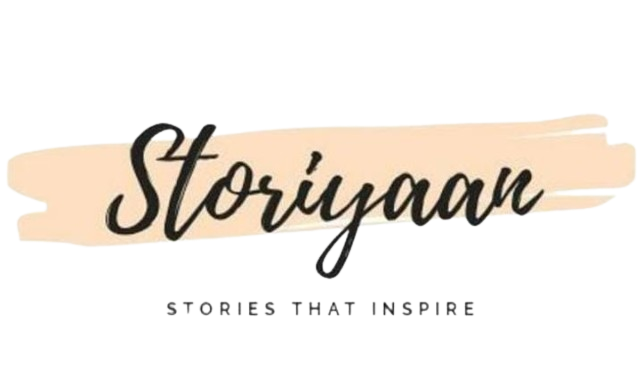Manali Debroy is dexterous with her craft of weaving emotions into words. Her book ‘Marigold- The Golden Memories‘ explores the depth of her literary talents. A collection of short stories diving deep into the complexity of human emotions.
Currently a columnist in ‘The Post India,’ her articles cover a broad spectrum of themes, further highlighting her proficiency as a writer. Her Instagram write-ups are a testimony to the splendid thoughts she molds into words.
Team Storyiaan had a chance to capture a gist of her life in a short interview.

Interview
Questions and answers
Tell us about 'Write to Live.’
It is a pen name under which I write on Instagram and other social platforms (my blog). Writing helps to let ideas flow and bring out the embedded nuances that are concealed daily. There are a lot of conjectures floating around, and there’s a need to screech them to a halt. I write with the hope that someday the society will be able to open their minds and be as non-judgemental as possible. Live and let live. Co-existence is not just peaceful but unsurprisingly enriching, holistically. That’s why I ‘write to live.’
Your work displays the portrayal of strong female characters. What is the importance of highlighting such characters in your stories?
A woman and her persona are always inspiring. I am an absolute admirer of the woman gender, in general. They are very giving in nature, intense and emotional, all at the same time. They are the bearers of life, and their perseverance is unmatchable. It is mesmerizing to exist in a time where women are going places and how. I am always spellbound to see women at the peak in innumerable fields and being equally giving to their families. I take notes from all these wonderful women and try to be as much giving to society as possible, professionally, and emotionally. The essence of emotions embedded in a woman is unsurpassable. It may seem like women are empowered enough, but their stories are still untold. The characters in my book are telling their stories.
Talk to us about your book 'Marigold- The Golden Memories.’
Marigold – The Golden Memories is not just a random book title that was thought of at the last minute. Every story in the book reflects vulnerability yet showcases the strength behind human emotions. The flower Marigold is a ceremonious symbol and a cherished flower that depicts happiness, new beginnings. Simply put, it soothes our soul, bringing a sense of calmness. Humans are a rare race who can remember the past, bottling them in as memories and inhaling the essence whenever they reminisce. That’s what the title of the book conveys. The book is reminiscing the readers of their fondest or unforgettable memories.
What was the highlight of writing this book? What were the difficulties you faced writing it?
The book is wrapped up with a lot of different human emotions, unraveling thoughts, memories, and feelings. This book takes you into a retrospective zone where you ruminate on your past life events. I want my stories to infiltrate the sense of understanding amongst the readers. I write with the hope and vision that sends out a positive message and encourages harmony. Crushing someone’s emotions and dreams to move ahead is not okay. There’s a part of you that is destroyed in the act of doing so. Whatever you do to send out a message in public is an effort. Writing reflects you and your thoughts. And you always make time for things that you love. I think these are experiences. Creating new characters for every new story, putting yourself in the reader’s lens requires a lot of concentration, patience, and imagination. Writing is challenging. Sometimes I have to make time from my job to write. Difficulties are nothing but the colors in the picture of success!
Your book is a collection of short stories, and there is a resemblance between the female character of the first and the last story. Was this done intentionally? If yes, why?
The contradictions that parallelly run in our character is mesmerizing. I wanted to capture that. So, the stories are not the same, but they run parallel, showcasing two female protagonists who are different and unknown to each other but share uncanny similarities. How each of them overcome their confusion to make rightful decisions draws a parallel in the characterization, whereas their stories differ.
You have collaborated with many writers. What is the process like? How do you decide on choosing who to collaborate with and what goes behind the scenes?
I have been part of a few anthologies, like Grey Constellation (poetry), Inked Fables (story). I have also been the co-editor for Inked Fables. The experience was unrivaled. There’s always collective learning in collaborating, and the knowledge that is milked from the group is unique. Social media is pure magic. You can connect with people and explore so many opportunities. When I started using Instagram to post my thoughts, writings (I call it #selfmusings, borrowed from the beloved Late actor Sushant Singh Rajput), I connected with many writers, publishing groups, etc. When you connect with people, you understand their thoughts, capacity, genre. You connect with people because of the same zeal – to learn something new – to write better. That’s how you know whom to collaborate with. Behind the scenes, it is pure communication. As exciting it is to collaborate and learn from each other, it is equally challenging to bring everyone to a set of standard terms. Nothing is easy, but what is not easy makes the journey worthwhile. I am open to listening to new thoughts. In the field of art, commanding leads to destruction because everyone is an artist.
Do you get motivated to write more, focusing on the quantity? Or do you take it slow and focus on the quality. Do you ever feel a need to rush?
I am always motivated to write. I write a lot – a few tidbits, poems, etc. But I take the time to write. My book, Marigold – the Golden Memories, took me almost two years to write and publish. I am not a definitive timeline person. Hence, I can’t tell you that I want to keep the same timeline for all my books. I am particular about the quality of my book. I want the readers to enjoy my next work as much as they loved the last one, if not more. My writing process includes writing, reading, and re-writing until I like what I wrote. I spend a lot of time as a reader, and hence the book should be appealing to me to pick up and read it. I cannot be biased and publish it even if it sounds awry.
You are a columnist in 'The Post.’ What is something that you like and dislike about your job?
There’s nothing that I dislike about being a featured writer in ‘The Post India.’ If anything, the journey so far has been enthralling. The editor-in-chief Dr. Nimrita Kaur Bassi is very encouraging and supportive of the kind of topics or ideas I come up with. The best part is I get to convey a message through my writings. I write articles on art, lifestyle, fashion, travel, social issues, finance, global events, etc. I am grateful to her for giving me every opportunity that I seek.
The cover of the book is very soothing and relaxing. Did you design the cover yourself? If not, was this what you had in mind when you envisioned the book?
I can’t take the full credit for the cover. Mostly it was my vision, but the final design was from the publisher’s end. It was a collaboration between the editor and me. The goal was to keep it simple yet deliver a message. Since my book is on life events, memories, past, the cover reflects the same saying golden memories. Each event or a memory we carry enlightens us. It improves us with spirituality, kindness, morality, and how to separate melancholy to embrace life as it comes.
If one reads the synopsis of the book or the blurb behind the book, they will not come to know exactly what to expect from the book. Has this been done deliberately? Did you want there to be some ambiguity in the minds of the reader when they picked up the book?
If you look at the line, I wrote at the back of the book. It states – “Life is like a paradox of love and pain that may never leave each other, but in the end, the coexistence is worth the journey. Striving for the best is human nature, but are you prepared for the roller-coaster rides or do you give up?” The book reflects this thought throughout. My book is not a novel or a short story, but it is a collection of 18 short stories that talk about the emotional journey of human life. All the stories revolve around a personal event in a person’s life. That’s why the blurbs reflect more on the journey of life rather than a particular story summary.
How did your writing differ from when you 1st began to now?
It evolved. It didn’t change. I wrote letters to my grandfather when I was five years old. Broken English, child-like handwriting but, I remember how enthusiastically I used to fill in the inland letter completely. I improved the sense of written communication there. I fondly remember it because my grandfather used to give me tips on improvisation, which I used to take very seriously. That’s how I got into writing. Being inquisitive, I take every comment seriously and improve on my writing. But what helps more is the reader in me that continually corrects me while writing. I am a reader first then a writer. So, I read a lot in terms of books as well as genres – art, science, literature, history, philosophy, poetry, fantasy, romance, etc. I like to keep my learnings open – 360-degree learning is what I say. That helps in expanding my horizon in writing, be it a book, a blog, an article, or an Instagram post.
Are there any more projects in the works?
Yes, there are exciting works ahead. But all are under conceptualization. There is a collaboration with a fellow writer on poetry-prose and then my solo romance novel.
Quick 5
- Favorite place you’ve been to: Switzerland
- Ethnic wear or Western wear: Western
- Singing or Painting: Very difficult. I am a trained classical singer while an innate sketch artist. Maybe, sketching
- Read all the best books in the world or let all the people in the world read yours: Read all the best books in the world, always.
- Paperback or eBook: Hardcover

